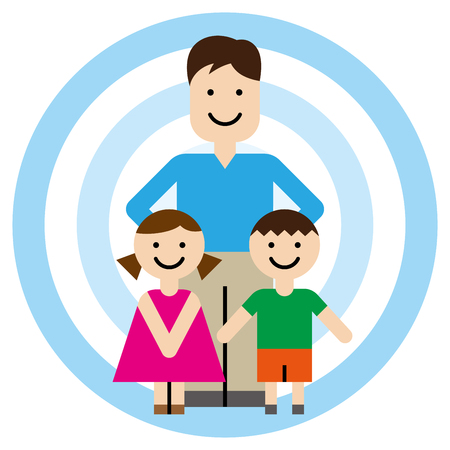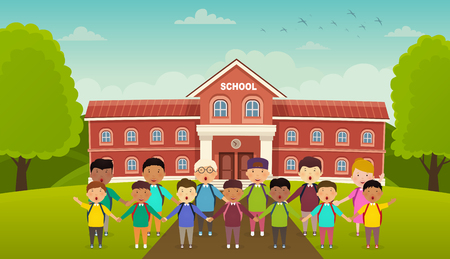Understanding Social Challenges for Children with Autism
Children with autism spectrum disorder (ASD) often experience unique challenges when it comes to social communication and interaction. In the United States, these differences can make daily life, school, and community activities more difficult. It’s important to recognize these challenges early so that families, educators, and therapists can provide the right support.
Common Social Challenges in Autism
Autism affects each child differently, but there are some common social difficulties seen among children with ASD. These can include trouble making eye contact, understanding body language, or knowing how to start a conversation. The table below highlights a few typical areas where children with autism might need extra help:
| Social Skill Challenge | Examples |
|---|---|
| Nonverbal Communication | Avoiding eye contact, not using gestures like waving or pointing |
| Starting Conversations | Struggling to say hello, ask questions, or join group activities |
| Understanding Social Cues | Missing facial expressions or tone of voice cues |
| Making Friends | Difficulty sharing interests or playing cooperatively with peers |
| Managing Emotions | Trouble expressing feelings or recognizing emotions in others |
The Importance of Early Intervention in the U.S.
In American communities, early intervention is considered one of the most effective ways to help children with autism build stronger social skills. Programs such as group therapy and community-based services are available in many states, giving kids the chance to learn and practice new skills in real-life settings. Starting support early helps children develop confidence and connections with others, which are important for their future success at school and in their neighborhoods.
Overview of Group Therapy Approaches
Group therapy is a popular and effective way to help children with autism develop social skills in the United States. These sessions bring kids together in a supportive environment where they can practice real-life interactions, guided by trained professionals. Let’s take a closer look at some evidence-based group therapy models widely used across the country and the techniques they use to foster social skills and peer engagement.
Common Group Therapy Models in the U.S.
| Therapy Model | Main Focus | Key Techniques |
|---|---|---|
| PEERS® Program (Program for the Education and Enrichment of Relational Skills) | Building friendships, conversation skills, conflict resolution | Role-playing, social coaching, parent involvement, homework assignments |
| SOCIAL SKILLS GROUPS (often based on Applied Behavior Analysis – ABA) | Turn-taking, sharing, understanding emotions | Modeling, positive reinforcement, structured play activities |
| S.T.A.R. Program (Strategies for Teaching Based on Autism Research) | Interactive play, communication, functional routines | Discrete trial training, pivotal response training, teaching through play |
| The Incredible Years® Dinosaur School | Emotional regulation, problem-solving, making friends | Puppets, group discussions, storytelling, reward systems |
| LEGO®-Based Therapy | Collaboration, communication during shared tasks | Team-building with LEGO sets, assigned roles (builder, supplier), group projects |
How These Approaches Work in Practice
Most group therapy programs start with simple activities like introducing oneself or practicing greetings. As children get comfortable, therapists introduce more complex scenarios such as starting conversations or working together on projects. Therapists guide kids through each step—demonstrating new skills first and then letting children try them out with gentle support. Positive feedback and encouragement are used throughout to build confidence and reinforce progress.
The Role of Peer Engagement
A key part of these groups is helping children learn from each other. By interacting with peers who may be at different skill levels or have unique strengths, kids get practical experience handling real-world social situations. Group games, collaborative tasks, and even friendly debates help children learn how to listen, share ideas, and resolve disagreements—all essential parts of building friendships.
Cultural Considerations in American Settings
In the U.S., these therapies often include family involvement—sometimes asking parents to join sessions or practice strategies at home. Programs are designed to reflect typical American school and community settings so that children can apply what they learn outside the therapy room. This local focus helps ensure that social skills are meaningful and relevant in daily life.

3. Community-Based Programs and Resources
Community-based programs across the United States play a big role in helping children with autism build social skills outside of the clinic or classroom. These programs give kids more chances to interact with others, make friends, and practice communication in real-life situations. Here are some popular types of community resources that support children with autism and their families.
Local and National Community Programs
| Program Name | Description | Location/Availability |
|---|---|---|
| Autism Speaks Community Events | Organizes walks, family fun days, and sensory-friendly activities for children on the spectrum. | National (check local chapters) |
| The YMCA’s Inclusive Programs | Offers sports, swimming, and after-school clubs with trained staff to support children with different abilities. | Nationwide (varies by branch) |
| Boys & Girls Clubs of America (BGCA) | Many locations provide inclusive after-school programs focused on teamwork and friendship-building. | Over 4,700 clubs across the U.S. |
| Easterseals Recreational Activities | Hosts summer camps and weekend activities designed for kids with special needs, including autism. | Available in many states |
| Sensory-Friendly Movie Nights (AMC Theatres) | Special movie screenings where kids can be themselves—lights up, volume down, moving around is okay! | Select AMC theaters nationwide |
After-School Clubs and Social Skills Groups
Many schools and community centers offer after-school clubs specifically for children with autism. These groups focus on teaching social rules, conversation skills, and how to work as a team—all in a fun setting. Examples include:
- Lego® Clubs: Building together encourages sharing and talking about common interests.
- Art Classes: Group art projects help express feelings and practice turn-taking.
- Coding or Robotics Clubs: Kids work together to solve problems while making new friends.
- Social Skills Groups: Led by therapists or trained volunteers, these groups use games and role-playing to practice greetings, asking questions, and handling disagreements.
Recreational Activities that Foster Social Connections
Sports Leagues and Special Olympics Unified Sports
Youth sports leagues like TOPSoccer, Challenger Baseball, and Special Olympics Unified Sports welcome kids of all abilities. Coaches often have training in working with neurodiverse children. These activities teach teamwork, patience, and self-confidence while letting kids burn off energy and have fun together.
Parks and Recreation Departments’ Inclusive Programming
Cities often run inclusive events such as sensory-friendly playground time, music classes, or family game nights. Check your city’s parks department website or call to ask about adaptive recreation options near you.
Quick Tips for Families Seeking Community Resources:
- Start Local: Ask your child’s school counselor or local autism advocacy group for recommendations.
- Use Online Directories: Websites like Autism Speaks’ Resource Guide or Easterseals’ local service finder can help you discover nearby programs.
- Visit Before You Commit: Many organizations offer trial sessions so your child can see if it’s a good fit before signing up long-term.
- Look for Trained Staff: Choose programs where leaders have experience supporting children on the spectrum for the best results.
The right community program can make a big difference in helping children with autism develop friendships, try new things, and feel included—all while having fun outside of therapy sessions or school!
4. Strategies for Building Social Skills
Using Real-Life Scenarios
One of the most effective ways to help children with autism develop social skills is by practicing real-life scenarios. This means creating situations that your child might face in their daily life, like greeting a neighbor or ordering food at a restaurant. Practicing these moments helps children feel more comfortable and confident when they encounter them in real life.
Example Table: Common Real-Life Scenarios and Practice Ideas
| Scenario | How to Practice |
|---|---|
| Meeting someone new | Role-play introductions at home using stuffed animals or family members. |
| Sharing toys | Practice taking turns with favorite toys during playtime. |
| Asking for help | Create opportunities where the child needs to ask for assistance, like opening a snack or finding an item. |
| Joining a group activity | Pretend you are joining a game and practice asking, “Can I play too?” |
Role-Playing Activities
Role-playing is a hands-on way for children to learn what to say and do in different social situations. Therapists, caregivers, or teachers can take on different roles and act out scenarios with the child. This allows kids to rehearse responses and actions in a safe, supportive environment. For example, you can pretend to be another child at school or a cashier at a store and practice having short conversations.
Tips for Successful Role-Playing:
- Keep sessions short and positive.
- Use simple language and clear steps.
- Praise efforts, not just results.
- Switch roles so the child can both lead and follow.
Peer Modeling in Groups
Peer modeling means showing children what good social skills look like by using other kids as examples. In group therapy or community programs, therapists often pair up children so they can watch each other interact. Kids may learn by observing how their peers greet each other, share materials, or handle disagreements. Watching friends or classmates navigate social moments makes it easier for children with autism to understand what’s expected.
Simple Peer Modeling Activities:
- Watch and Copy: One child demonstrates a skill (like saying “hello”), then the others try it themselves.
- Partner Games: Kids work together on simple games that require teamwork and communication.
- Praise Positive Behaviors: Give positive feedback when kids use good social skills so others see what’s encouraged.
The Importance of Consistency and Community Involvement
Building social skills takes time and regular practice. The more chances children have to practice—at home, in therapy groups, and out in the community—the better. Caregivers, educators, and therapists should work together, sharing ideas and strategies to help children grow socially. Local programs like after-school clubs, sports teams, or library story times also offer safe spaces for children with autism to make friends and practice their skills in real-world settings.
5. Supporting Families and Encouraging Inclusion
The Power of Teamwork: Family, School, and Community Collaboration
Helping children with autism build social skills is not just the job of therapists or teachers—its a team effort. When families, schools, and communities work together, kids get more chances to connect and grow. Here are some ways everyone can join forces to support children with autism:
Ways Families Can Help at Home
| Strategy | How It Helps |
|---|---|
| Role-playing Social Situations | Makes new interactions less scary and builds confidence. |
| Using Visual Schedules | Prepares kids for group activities by showing what to expect. |
| Praising Social Efforts | Boosts motivation when a child tries to interact with others. |
How Schools Can Foster Inclusion
- Peer Buddy Programs: Pairing students with and without autism helps everyone learn from each other.
- Inclusive Classrooms: Teachers can use flexible seating, quiet spaces, and social stories to support all learners.
- Teacher Training: Staff should be trained on autism-friendly strategies to create a welcoming environment.
The Role of Community-Based Programs
- Social Skills Groups: Local recreation centers or therapy clinics often offer small group sessions focused on practicing communication and friendship skills in real-life settings.
- Sensory-Friendly Events: Libraries, museums, and sports leagues can host events that are welcoming to kids with sensory needs.
- Parent Support Networks: Connecting families gives them a chance to share resources and encouragement.
Together, We Make a Difference
No single person or place has all the answers. When families, schools, and communities share ideas and work side by side, children with autism have more opportunities to connect, learn, and thrive socially. The more we include everyone, the stronger our communities become—and every child feels like they belong.


